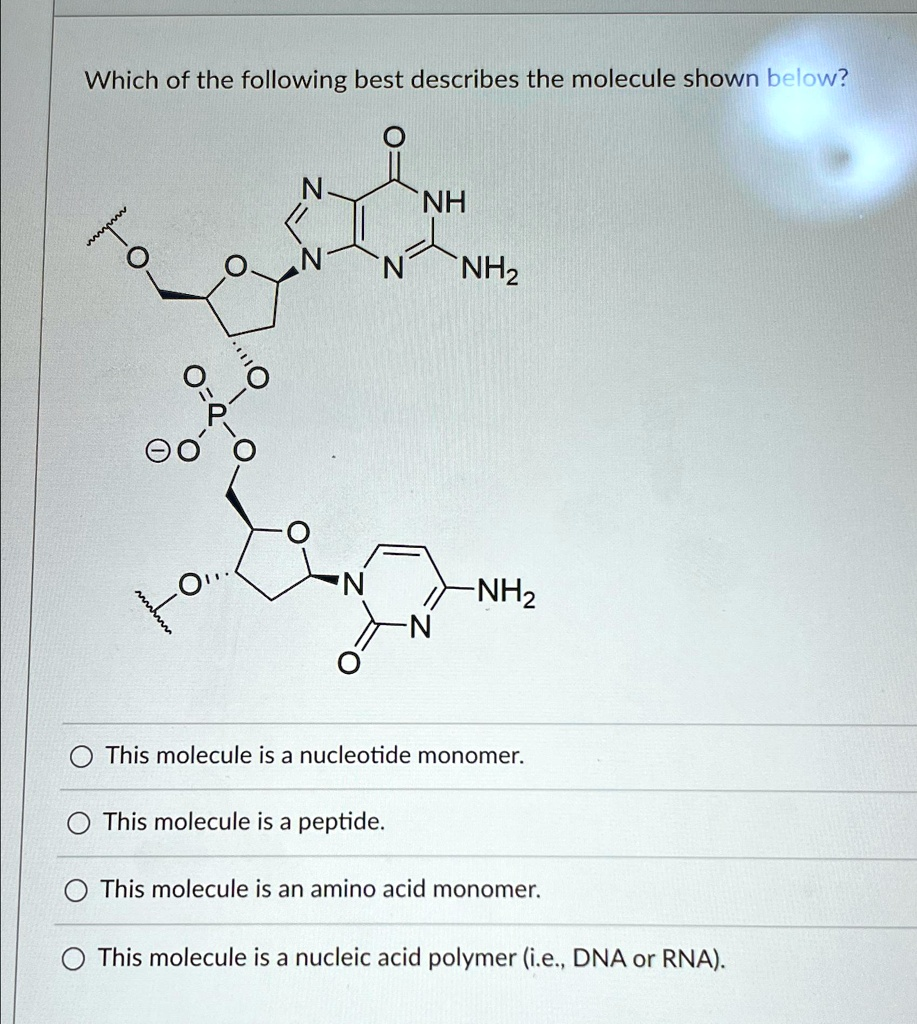Which of the following best describes the molecule shown below? This molecule is a nucleotide monomer. This molecule is a peptide. This molecule is an amino acid monomer. This molecule is a nucleic acid polymer (i.e., DNA or RNA).

The Correct Answer and Explanation is:
The correct answer is: This molecule is a nucleotide monomer.
The molecule shown contains three distinct components: a nitrogenous base, a five-carbon sugar (specifically ribose), and a phosphate group. This combination is the signature structure of a nucleotide monomer. Nucleotides are the fundamental units that make up nucleic acids such as DNA and RNA.
Starting with the nitrogenous base, the depicted structure resembles adenine, one of the purine bases found in both DNA and RNA. Next is the sugar unit, which is ribose, identified by the presence of a hydroxyl group on the 2′ carbon. The distinction between ribose and deoxyribose is essential. Ribose has an –OH at the 2′ position, whereas deoxyribose lacks it, having only a hydrogen atom there. This implies the nucleotide is part of RNA rather than DNA. Finally, the phosphate group is attached to the 5′ carbon of the ribose sugar, making this molecule ready to be polymerized into RNA through phosphodiester bonds.
This structure eliminates the other options. A peptide consists of amino acids joined by peptide bonds, which are not seen in this molecule. An amino acid monomer has a central carbon atom bonded to an amino group, a carboxyl group, a hydrogen, and a variable side chain — none of which appear here. A nucleic acid polymer would show a chain of several nucleotide units joined together, rather than a single nucleotide as seen in the image.
In summary, this molecule is a nucleotide monomer due to its three-part structure and presence of ribose, distinguishing it from peptides, amino acids, and nucleic acid polymers.
